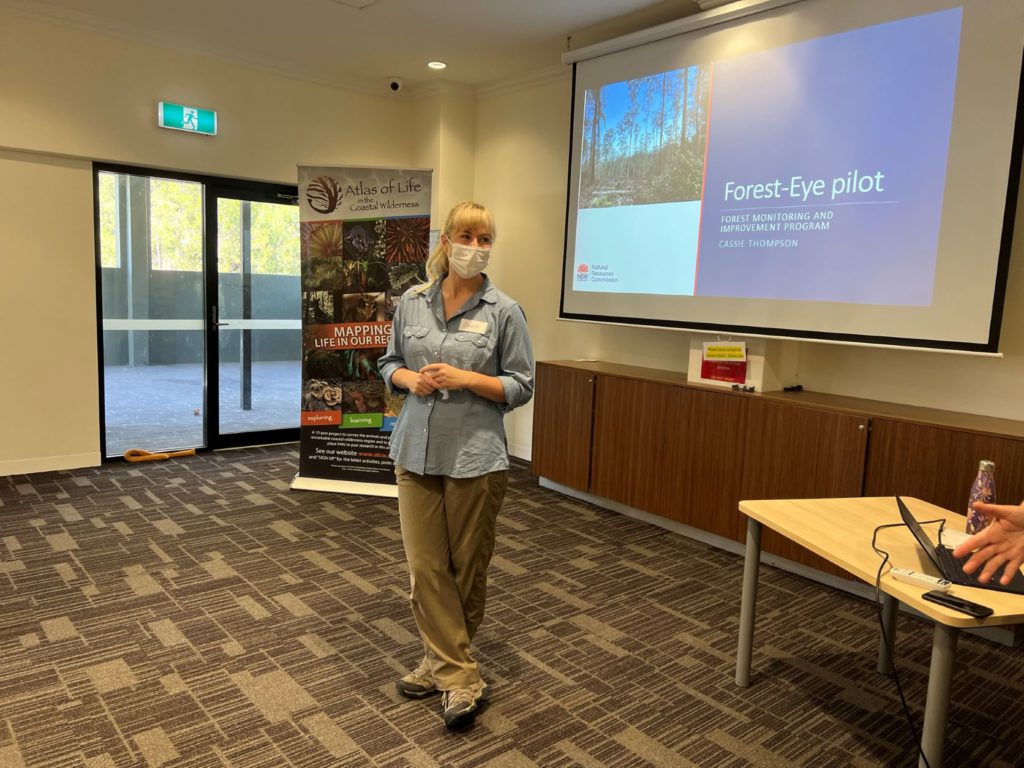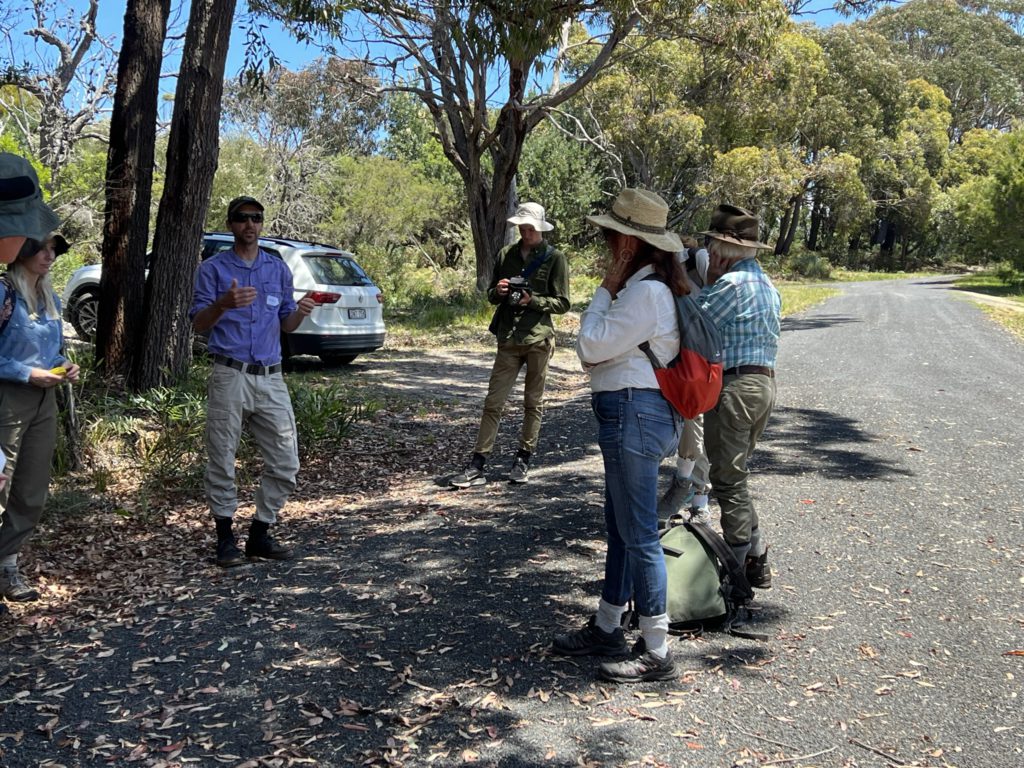By Geetha Ortac
A few months ago, ACSA announced its partnership with the Natural Resources Commission of NSW (NRC, lead partner) and the Atlas of Life to deliver a new and exciting forest monitoring citizen science project named ForestEye. This project was due to be piloted in October, however Covid-19 restrictions meant a 2 month delay. We are now happy to report ForestEye finally kicked-off on 1 Dec 2021 in the beautiful Bega Shire Valley!
Nine enthusiastic citizen scientists from nearby local areas joined us for two days of training and fieldwork participating in the set-up of remote sensor cameras and two different types of devices that enabled acoustic recording and monitoring of bats and other wildlife. As ForestEye’s vision is to support long-term forest monitoring across New South Wales, a pilot such as this is important to test the initial design and identify crucial areas for improvement based on direct feedback from the citizen scientists and the project team.

The morning of 1 Dec started with presentations from the various project partners at a local library in Tura NSW, namely NSW Natural Resources Commission (NRC), Australian Citizen Science Association, Atlas of Life and the Bega Shire Valley Council. Cassie Thompson from NRC presented about the importance of having initiatives such as ForestEye while Andrew Morrison from the council provided an overview about their local biodiversity. There was so much excitement amongst the citizen scientists as Andrew’s presentation revealed the many native species living within their local areas.
The training was delivered by Anna McConville, a highly experienced ecologist who specialises in acoustic monitoring and various other field techniques such as the use of remote sensor cameras to monitor wildlife. The training was a huge hit as the volunteers got hands-on experience with the various types of equipment that are used by experts who undertake wildlife monitoring.
The training was further expanded on-site as the citizen scientists worked alongside Cassie and Anna to search for the perfect spot to set up the survey equipment. This provided numerous learning opportunities to learn about habitat observations, looking for vital signs of wildlife activities, completing field data sheets and so much more. It was absolutely phenomenal to witness such a high level of commitment and interest as the citizen scientists asked numerous questions, demonstrating their thirst for knowledge and their desire to learn more about their local natural areas and wildlife.
As the two days came to a close, it left everyone with a big smile on their face and an appetite for more. Overall, we are happy to report that the ForestEye pilot project was a huge hit with the citizen scientists!
Keen to get involved?
Once the equipment has been collected from our sites (in late December), all the images and audio files will be downloaded and prepared for analysis. The images from the remote sensor cameras will then be uploaded to DigiVol, an online citizen science platform. This enables other keen citizen scientists to give us a helping hand to identify any wildlife captured during the surveys.
If you would like to be notified when the DigiVol opportunity becomes available (most likely sometime in early 2022) or would like to see ForestEye established in your local area, please register your interest via this EOI form [https://forms.gle/foiiZ7t7aH8eWvfP6]. (No promises, but it does help us establish the level of interest for a project like ForestEye in other parts of NSW to aid our future planning).







